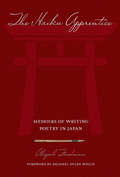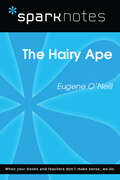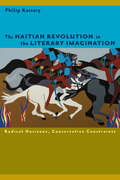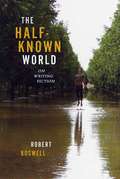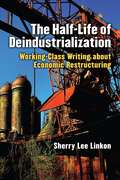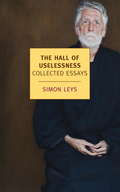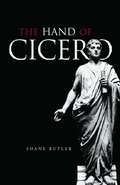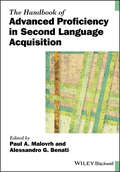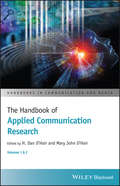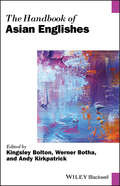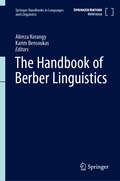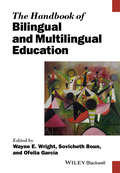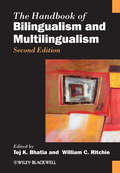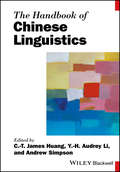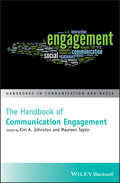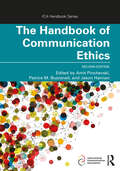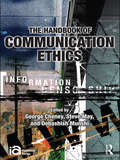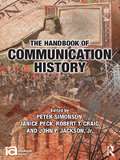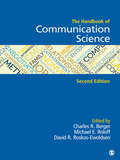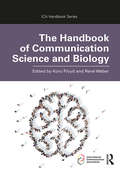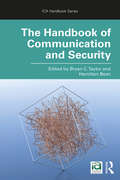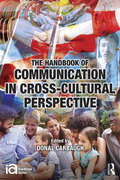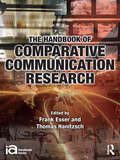- Table View
- List View
The Haiku Apprentice
by Abigail Friedman Michael Dylan WelchThe problem came to a head one day as I was driving through Tokyo. While waiting for the light to change, I saw the following public service announcement on the side of a bus: Omoiyari hitonikurumani konomachini (Sympathy / toward people, toward cars / toward this town). Seventeen syllables. Five-seven-five format. It must be a haiku, I thought. But when I reached the office and repeated the announcement to my Japanese coworkers, none of them thought it was a haiku. I knew they were thinking to themselves, What kind of a lunatic is she? One tried to break the news to me gently, It's not a haiku, it's an advertising jingle. Well, I knew it was an advertising jingle, but still, wasn't it an advertising jingle haiku?--From The Haiku ApprenticeAbigail Friedman was an American diplomat in Tokyo, not a writer. A chance encounter leads her to a haiku group, where she discovers poetry that anyone can enjoy writing. Her teacher and fellow haiku group members instruct her in seasonal flora and fauna, and gradually she learns to describe the world in plain words, becoming one of the millions in Japan who lead a haiku life. This is the author's story of her literary and cultural voyage, and more: it is an invitation to readers to form their own neighborhood haiku groups and, like her, learn to see the world anew."...A deft and seamless merging of genres: at once memoir, travel literature, and an unpretentious guide onto the terrain of Japanese poetry. It will appeal not just to poetry lovers, but to all readers who are curious about the world beyond their own borders." -- Foreword Magazine"Friedman is an appealing guide through an alternate Japan where modern people make poems about teacups and temples but also about skyscrapers and kidney surgery." -- East Bay Express"The book is not designed to make the reader a poet, but it does, perhaps, help us to pay more attention to our poetical eye." -- BiblioBuffet"The Haiku Apprentice gives the reader an original, thoughtful and personal glimpse of one expat's productive encounter with Japan." -- Metropolis "...Notable for its frankness and enthusiasm...Friedman has made a lively narrative out of the things she learned..." -- The Japan Times
The Hairy Ape (SparkNotes Literature Guide Series)
by SparkNotesThe Hairy Ape (SparkNotes Literature Guide) by Eugene O'Neill Making the reading experience fun! Created by Harvard students for students everywhere, SparkNotes is a new breed of study guide: smarter, better, faster.Geared to what today's students need to know, SparkNotes provides:chapter-by-chapter analysis explanations of key themes, motifs, and symbols a review quiz and essay topics Lively and accessible, these guides are perfect for late-night studying and writing papers.
The Haitian Revolution in the Literary Imagination: Radical Horizons, Conservative Constraints (New World Studies)
by Philip KaisaryThe Haitian Revolution (1791–1804) reshaped the debates about slavery and freedom throughout the Atlantic world, accelerated the abolitionist movement, precipitated rebellions in neighboring territories, and intensified both repression and antislavery sentiment. The story of the birth of the world’s first independent black republic has since held an iconic fascination for a diverse array of writers, artists, and intellectuals throughout the Atlantic diaspora. Examining twentieth-century responses to the Haitian Revolution, Philip Kaisary offers a profound new reading of the representation of the Revolution by radicals and conservatives alike in primary texts that span English, French, and Spanish languages and that include poetry, drama, history, biography, fiction, and opera.In a complementary focus on canonical works by Aimé Césaire, C. L. R. James, Edouard Glissant, and Alejo Carpentier in addition to the work of René Depestre, Langston Hughes, and Madison Smartt Bell, Kaisary argues that the Haitian Revolution generated an enduring cultural and ideological inheritance. He addresses critical understandings and fictional reinventions of the Revolution and thinks through how, and to what effect, authors of major diasporic texts have metamorphosed and appropriated this spectacular corner of black revolutionary history.
The Half-Known World: On Writing Fiction
by Robert BoswellA rigorous examination of the workings of fiction by the novelist Robert Boswell, "one of America's finest writers" (Tom Perrotta) Robert Boswell has been writing, reading, and teaching literature for more than twenty years. In this sparkling collection of essays, he brings this vast experience and a keen critical eye to bear on craft issues facing literary writers. Examples from masters such as Leo Tolstoy, Flannery O'Connor, and Alice Munro illustrate this engaging discussion of what makes great writing.At the same time, Boswell moves readers beyond the classroom, candidly sharing the experiences that have shaped his own writing life. A chance encounter in a hotel bar leads to a fascinating glimpse into his imaginative process. And through the story of a boyhood adventure, Boswell details how important it is for writers to give themselves over to what he calls the "half-known world" of fiction, where surprise and meaning converge.
The Half-Life of Deindustrialization: Working-Class Writing about Economic Restructuring (Class : Culture)
by Sherry L LinkonStarting in the late 1970s, tens of thousands of American industrial workers lost jobs in factories and mines. Deindustrialization had dramatic effects on those workers and their communities, but its longterm effects continue to ripple through working-class culture. Economic restructuring changed the experience of work, disrupted people’s sense of self, reshaped local landscapes, and redefined community identities and expectations. Through it all, working-class writers have told stories that reflect the importance of memory and the struggle to imagine a different future. These stories make clear that the social costs of deindustrialization affect not only those who lost their jobs but also their children, their communities, and American culture. Through analysis of poetry, fiction, creative nonfiction, film, and drama, The Half-Life of Deindustrialization shows why people and communities cannot simply “get over” the losses of economic restructuring. The past provides inspiration and strength for working-class people, even as the contrast between past and present highlights what has been lost in the service economy. The memory of productive labor and stable, proud working-class communities shapes how people respond to contemporary economic, social, and political issues. These stories can help us understand the resentment, frustration, pride, and persistence of the American working class.
The Hall of Uselessness
by Simon LeysAn NYRB Classics OriginalSimon Leys is a Renaissance man for the era of globalization. A distinguished scholar of classical Chinese art and literature and one of the first Westerners to recognize the appalling toll of Mao's Cultural Revolution, Leys also writes with unfailing intelligence, seriousness, and bite about European art, literature, history, and politics and is an unflinching observer of the way we live now.The Hall of Uselessness is the most extensive collection of Leys's essays to be published to date. In it, he addresses subjects ranging from the Chinese attitude to the past to the mysteries of Belgium and Belgitude; offers portraits of André Gide and Zhou Enlai; takes on Roland Barthes and Christopher Hitchens; broods on the Cambodian genocide; reflects on the spell of the sea; and writes with keen appreciation about writers as different as Victor Hugo, Evelyn Waugh, and Georges Simenon. Throughout, The Hall of Uselessness is marked with the deep knowledge, skeptical intelligence, and passionate conviction that have made Simon Leys one of the most powerful essayists of our time.
The Hand of Cicero
by Shane ButlerHundreds perished in Rome's Second Proscription, but one victim is remembered above all others. Cicero stands out, however, not only because of his fame, but also because his murder included a unique addition to the customary decapitation. For his corpse was deprived not only of its head, but also of its right hand. Plutarch tells us why Mark Antony wanted the hand that wrote the Philippics. But how did it come to pass that Rome's greatest orator could be so hated for the speeches he had written?Charting a course through Cicero's celebrated career, Shane Butler examines two principal relationships between speech and writing in Roman oratory: the use of documentary evidence by orators and the 'publication' of both delivered and undelivered speeches. He presents this fascinating theory that the success of Rome's greatest orator depended as much on writing as speaking; he also argues against the conventional wisdom that Rome was an 'oral society', in which writing was rare and served only practical, secondary purposes.
The Handbook of Advanced Proficiency in Second Language Acquisition (Blackwell Handbooks in Linguistics)
by Alessandro G. Benati Paul A. MalovrhA comprehensive, current review of the research and approaches to advanced proficiency in second language acquisition The Handbook of Advanced Proficiency in Second Language Acquisition offers an overview of the most recent and scientific-based research concerning higher proficiency in second language acquisition (SLA). With contributions from an international team of experts in the field, the Handbook presents several theoretical approaches to SLA and offers an examination of advanced proficiency from the viewpoint of various contexts and dimensions of second language performance. The authors also review linguistic phenomena among advanced learners through the lens of phonology and grammar development. Comprehensive in scope, this book provides an overview of advanced proficiency grounded in socially-relevant domains of second language acquisition including discourse, reading, genre-based writing, and pragmatic competence. The authoritative volume brings together the theoretical accounts of advanced language use combined with solid empirical research. Includes contributions from an international collection of noted scholars in the field of second language acquisition Offers a variety of theoretical approaches to SLA Contains information on the most recent empirical research that contributes to an understanding of SLA Describes performance phenomena according to multiple approaches to SLA Written for scholars, students and linguists, The Handbook of Advanced Proficiency in Second Language Acquisition is a comprehensive text that offers the most recent developments in the study of advanced proficiency in the acquisition of a second language.
The Handbook of Applied Communication Research (Handbooks in Communication and Media)
by H. Dan O’Hair Mary John O’HairAn authoritative survey of different contexts, methodologies, and theories of applied communication The field of Applied Communication Research (ACR) has made substantial progress over the past five decades in studying communication problems, and in making contributions to help solve them. Changes in society, human relationships, climate and the environment, and digital media have presented myriad contexts in which to apply communication theory. The Handbook of Applied Communication Research addresses a wide array of contemporary communication issues, their research implications in various contexts, and the challenges and opportunities for using communication to manage problems. This innovative work brings together the diverse perspectives of a team of notable international scholars from across disciplines. The Handbook of Applied Communication Research includes discussion and analysis spread across two comprehensive volumes. Volume one introduces ACR, explores what is possible in the field, and examines theoretical perspectives, organizational communication, risk and crisis communication, and media, data, design, and technology. The second volume focuses on real-world communication topics such as health and education communication, legal, ethical, and policy issues, and volunteerism, social justice, and communication activism. Each chapter addresses a specific issue or concern, and discusses the choices faced by participants in the communication process. This important contribution to communication research: Explores how various communication contexts are best approached Addresses balancing scientific findings with social and cultural issues Discusses how and to what extent media can mitigate the effects of adverse events Features original findings from ongoing research programs and original communication models and frameworks Presents the best available research and insights on where current research and best practices should move in the future A major addition to the body of knowledge in the field, The Handbook of Applied Communication Research is an invaluable work for advanced undergraduate students, graduate students, and scholars.
The Handbook of Asian Englishes (Blackwell Handbooks in Linguistics)
by Andy Kirkpatrick Kingsley Bolton Werner BothaThe first volume of its kind, focusing on the sociolinguistic and socio-political issues surrounding Asian Englishes The Handbook of Asian Englishes provides wide-ranging coverage of the historical and cultural context, contemporary dynamics, and linguistic features of English in use throughout the Asian region. This first-of-its-kind volume offers a wide-ranging exploration of the English language throughout nations in South Asia, Southeast Asia, and East Asia. Contributions by a team of internationally-recognized linguists and scholars of Asian Englishes and Asian languages survey existing works and review new and emerging areas of research in the field. Edited by internationally renowned scholars in the field and structured in four parts, this Handbook explores the status and functions of English in the educational institutions, legal systems, media, popular cultures, and religions of diverse Asian societies. In addition to examining nation-specific topics, this comprehensive volume presents articles exploring pan-Asian issues such as English in Asian schools and universities, English and language policies in the Asian region, and the statistics of English across Asia. Up-to-date research addresses the impact of English as an Asian lingua franca, globalization and Asian Englishes, the dynamics of multilingualism, and more. Examines linguistic history, contemporary linguistic issues, and English in the Outer and Expanding Circles of Asia Focuses on the rapidly-growing complexities of English throughout Asia Includes reviews of the new frontiers of research in Asian Englishes, including the impact of globalization and popular culture Presents an innovative survey of Asian Englishes in one comprehensive volume Serving as an important contribution to fields such as contact linguistics, World Englishes, sociolinguistics, and Asian language studies, The Handbook of Asian Englishes is an invaluable reference resource for undergraduate and graduate students, researchers, and instructors across these areas.
The Handbook of Berber Linguistics (Springer Handbooks in Languages and Linguistics)
by Alireza Korangy Karim BensoukasThis handbook is the largest and most comprehensive publication on Berber linguistics to date, covering the variety of Berber dialects and related linguistics trends. Extensive and diverse at thematic and theoretical levels, with the aim of deepening students and scholars' understanding of the workings of Berber as a linguistic phenomenon, it explores a multitude of angles through which the diachronic and synchronic intricacies of Berber varieties can be examined. It enables a better understanding of the issues in the various components of North African languages, as well as their theoretical and typological significance and implications. The work covers phonology and phonetics, morphology and syntax, semantics and pragmatics, socio-linguistics and dialectology, language teaching and psycholinguistics, lexicology, language contact and comparative linguistics, historical linguistics and etymology. Sub-themes explored include prosody, ideophones (and expressive language in general), morpho-syntactic categories, sociolinguistic variation and several other seminal interdisciplinary explorations. The chapters reflect the diversity of Berber varieties and include up-to-date scholarship by leading Berberists, with varieties including Figuig, Kabyle, Senhaja, Siwa, Standard Moroccan Amazigh, Tamazight, Tarifit, Tashlhit, Touareg, Tunisian Berber, Znaga, as well as Proto-Berber. A large geographical territory is covered, including Algeria, Egypt, Libya, Mali, Mauritania, Morocco, and Tunisia. With contributions from these Berber-speaking countries and their diaspora, there are also chapters from prominent Berber scholars from America, Australia and Europe. To this end, the volume includes perspectives and theories from different schools of linguistics. In including original French contributions and English translations of research from top scholars in the field, the book includes another vital dimension in terms ofthe resources, and sources. As a comprehensive reference, this work is of interest to North Africanists from various disciplines, including anthropologists, linguists, and sociologists, but particularly linguists interested in endangered languages, and those working on the historical and comparative study of the Afroasiatic language phylum.
The Handbook of Bilingual and Multilingual Education (Blackwell Handbooks in Linguistics)
by Ofelia García Wayne E. Wright Sovicheth BounThe Handbook of Bilingual and Multilingual Education presents the first comprehensive international reference work of the latest policies, practices, and theories related to the dynamic interdisciplinary field of bilingual and multilingual education. Represents the first comprehensive reference work that covers bilingual, multilingual, and multicultural educational policies and practices around the world Features contributions from 78 established and emerging international scholars Offers extensive coverage in sixteen chapters of language and education issues in specific and diverse regional/geographic contexts, including South Africa, Mexico, Latvia, Cambodia, Japan, and Texas Covers pedagogical issues such as language assessment as well as offering evolving perspectives on the needs of specific learner populations, such as ELLs, learners with language impairments, and bilingual education outside of the classroom
The Handbook of Bilingualism and Multilingualism (Blackwell Handbooks in Linguistics)
by William C. Ritchie Tej K. Bhatia**Honored as a 2013 Choice Outstanding Academic Title**Comprising state-of-the-art research, this substantially expanded and revised Handbook discusses the latest global and interdisciplinary issues across bilingualism and multilingualism. Includes the addition of ten new authors to the contributor team, and coverage of seven new topics ranging from global media to heritage language learning Provides extensively revised coverage of bilingual and multilingual communities, polyglot aphasia, creolization, indigenization, linguistic ecology and endangered languages, multilingualism, and forensic linguistics Brings together a global team of internationally-renowned researchers from different disciplines Covers a wide variety of topics, ranging from neuro- and psycho-linguistic research to studies of media and psychological counseling Assesses the latest issues in worldwide linguistics, including the phenomena and the conceptualization of 'hyperglobalization', and emphasizes geographical centers of global conflict and commerce
The Handbook of Chinese Linguistics (Blackwell Handbooks in Linguistics)
by Andrew Simpson C.-T. James Huang Y.-H. Audrey LiThe Handbook of Chinese Linguistics is the first comprehensive introduction to Chinese linguistics from the perspective of modern theoretical and formal linguistics. Containing twenty-five chapters, the book offers a balanced, accessible and thoughtfully organized introduction to some of the most important results of research into Chinese linguistics carried out by theoretical linguists during the last thirty years. Presenting critical overviews of a wide range of major topics, it is the first to meet the great demand for an overview volume on core areas of Chinese linguistics.Authoritative contributions describe and assess the major achievements and controversies of research undertaken in each area, and provide bibliographies for further reading. The contributors refer both to their own work in relevant fields, and objectively present a range of competitor theories and analyses, resulting in a volume that is fully comprehensive in its coverage of theoretical research into Chinese linguistics in recent years. This unique Handbook is suitable both as a primary reader for structured, taught courses on Chinese linguistics at university level, and for individual study by graduates and other professional linguists.
The Handbook of Classroom Discourse and Interaction (Blackwell Handbooks in Linguistics #115)
by Numa MarkeeOffering an interdisciplinary approach, The Handbook of Classroom Discourse and Interaction presents a series of contributions written by educators and applied linguists that explores the latest research methodologies and theories related to classroom language. • Organized to facilitate a critical understanding of how and why various research traditions differ and how they overlap theoretically and methodologically • Discusses key issues in the future development of research in critical areas of education and applied linguistics • Provides empirically-based analysis of classroom talk to illustrate theoretical claims and methodologies • Includes multimodal transcripts, an emerging trend in education and applied linguistics, particularly in conversation analysis and sociocultural theory
The Handbook of Clinical Linguistics (Blackwell Handbooks in Linguistics)
by Elizabeth Spencer Martin J. Ball Nicole MüllerThe new edition of the leading reference work on Clinical Linguistics, fully updated with new research and developments in the field The Handbook of Clinical Linguistics, Second Edition provides a timely and authoritative survey of this interdisciplinary field, exploring the application of linguistic theory and method to the study of speech and language disorders. Containing 42 in-depth chapters by an international panel of established and rising scholars, this classic volume addresses a wide range of pathologies while offering valuable insights into key theory and research, multilingual and cross-linguistics factors, analysis and assessment methods, and more. Now in its second edition, The Handbook of Clinical Linguistics features nine entirely new chapters on clinical corpus linguistics, multimodal analysis, cognition and language, the linguistics of sign languages, clinical phonotactics, typical and nontypical phonological development, clinical phonology and phonological assessment, and two chapters on instrumental analysis of voice and speech production. Revised and expanded chapters incorporate new research in clinical linguistics and place greater emphasis on specific speech disorders, connections to literacy, and multilingualism. This invaluable reference works: Reflects the latest developments in new research and data, as well as changing perspectives about the priorities and future of the field Features new and revised chapters throughout, many with new authors or authorial teams Offers well-rounded coverage of the major areas of the speech sciences in the study of communication disorders Discusses how mainstream theories and descriptions of language are influenced by clinical researchBuilding on the success of the first edition, The Handbook of Clinical Linguistics, Second Edition, is an indispensable resource for researchers and advanced students across all areas of speech-language sciences, including speech disorders, speech pathology, speech therapy, communication disorders, cognitive linguistics, and neurolinguistics.
The Handbook of Communication Engagement (Handbooks in Communication and Media)
by Maureen Taylor Kim A. JohnstonA comprehensive volume that offers the most current thinking on the practice and theory of engagement With contributions from an international panel of leaders representing diverse academic and professional fields The Handbook of Communication Engagement brings together in one volume writings on both the theory and practice of engagement in today’s organizations and societies. The expert contributors explore the philosophical, theoretical, and applied concepts of communication engagement as it pertains to building interaction and connections in a globalized, networked society. The Handbook of Communication Engagement is comprehensive in scope with case studies of engagement from various disciplines including public relations, marketing, advertising, employee relations, education, public diplomacy, and politics. The authors advance the current thinking in engagement theory, strategy, and practice and provide a review of foundational and emerging research in engagement topics. The Handbook of Communication Engagement is an important text that: Provides an overview of the foundations and philosophies of engagement Identifies the contexts of engagement relating to specific areas across government and corporations, including CSR, consumer, activism, diplomacy, digital, and social impact Includes examples of contemporary engagement practice Presents applications of engagement and technology Offers insights on the future directions of engagement The Handbook of Communication Engagement offers an essential reference for advanced undergraduate, graduate students, practitioners and scholars from communication, media, advertising, public relations, public policy, and public diplomacy areas. The volume contains a compendium of the writings on the most recent advances on the theory and practice of engagement. Winner of the 2018 PRIDE Award for Innovation, Development, and Educational Achievement from the Public Relations Division of the National Communication Association.
The Handbook of Communication Ethics (ICA Handbook Series)
by Amit Pinchevski Patrice M. Buzzanell Jason HannanThe second edition of this handbook offers a thoroughly updated overview of the different approaches and perspectives in communication ethics today.Extending the path paved by its predecessor, this handbook includes new issues and concerns that have emerged in the interim—from environmentalism to artificial intelligence, from disability studies to fake news. It also features a new structure, comprised of three sections representing a wide array of communication ethics: traditions, contexts, and debates. Rather than focusing exclusively on a subset of ethics (such as interpersonal communication, rhetoric, or journalism, as do other handbooks of ethics in communication), this collection provides a valuable resource for those who seek a broader basis on which to study communication ethics.This handbook is a must-read for faculty, graduate students, and advanced undergraduate students in all areas of communication studies, as well as in neighboring disciplines such as rhetoric, media studies, sociology, political science, cultural studies, and science and technology studies.
The Handbook of Communication Ethics (ICA Handbook Series)
by George CheneyThe Handbook of Communication Ethics serves as a comprehensive guide to the study of communication and ethics. It brings together analyses and applications based on recognized ethical theories as well as those outside the traditional domain of ethics but which engage important questions of power, equality, and justice. The work herein encourages readers to make important connections between matters of social justice and ethical theory. This volume makes an unparalleled contribution to the literature of communication studies, through consolidating knowledge about the multiple relationships between communication and ethics; by systematically treating areas of application; and by introducing explicit and implicit examinations of communication ethics to one another. The Handbook takes an international approach, analyzing diverse cultural contexts and comparative assessments. The chapters in this volume cover a wide range of theoretical perspectives on communication and ethics, including feminist, postmodern and postcolonial; engage with communication contexts such as interpersonal and small group communication, journalism, new media, visual communication, public relations, and marketing; and explore contemporary issues such as democracy, religion, secularism, the environment, trade, law, and economics. The chapters also consider the dialectical tensions between theory and practice; academic and popular discourses; universalism and particularism; the global and the local; and rationality and emotion. An invaluable resource for scholars in communication and related disciplines, the Handbook also serves as a main point of reference in graduate and upper-division undergraduate courses in communication and ethics. It stands as an exceptionally comprehensive resource for the study of communication and ethics.
The Handbook of Communication History (ICA Handbook Series)
by Jr. Janice Peck Peter Simonson Robert T. Craig John P. JacksonThe Handbook of Communication History addresses central ideas, social practices, and media of communication as they have developed across time, cultures, and world geographical regions. It attends to both the varieties of communication in world history and the historical investigation of those forms in communication and media studies. The Handbook editors view communication as encompassing patterns, processes, and performances of social interaction, symbolic production, material exchange, institutional formation, social praxis, and discourse. As such, the history of communication cuts across social, cultural, intellectual, political, technological, institutional, and economic history. The volume examines the history of communication history; the history of ideas of communication; the history of communication media; and the history of the field of communication. Readers will explore the history of the object under consideration (relevant practices, media, and ideas), review its manifestations in different regions and cultures (comparative dimensions), and orient toward current thinking and historical research on the topic (current state of the field). As a whole, the volume gathers disparate strands of communication history into one volume, offering an accessible and panoramic view of the development of communication over time and geographical places, and providing a catalyst to further work in communication history.
The Handbook of Communication Science
by Charles R. Berger Michael E. Roloff David R. EwoldsenThis revision of a classic volume presents state-of-the-art reviews of established and emerging areas of communication science and provides an intellectual compass that points the way to future theorizing about communication processes. In this Second Edition of The Handbook of Communication Science, editors Charles R. Berger, Michael E. Roloff, and David Roskos-Ewoldsen bring together an impressive array of communication scholars to explore and synthesize the varying perspectives and approaches within the dynamic field of communication science. After first addressing the methods of research and the history of the field, the Handbook then examines the levels of analysis in communication (individual to macro-social), the functions of communication (such as socialization and persuasion), and the contexts in which communication occurs (such as couples, families, organizations, and mass media). Key Features: Draws on the scholarship and expertise of leading communication scholars who explore different aspects of the field Covers all facets of communication science, from the historical and theoretical to the practical and applied Covers the latest theoretical developments in the field, as well as alternative methodologies and levels of analysis Explores key communication contexts of the 21st century, including interpersonal dimensions of health communication, the scientific investigation of marital and family communication, and computer-mediated communication Includes incisive analyses, literature reviews, bibliographies, and suggestions for future research The Handbook of Communication Science, Second Edition, is an essential reference resource for scholars, practitioners, and students. It is appropriate for upper-level undergraduate or graduate courses in Communication and Media Studies and Mass Communication.
The Handbook of Communication Science and Biology (ICA Handbook Series)
by René Weber Kory FloydThe Handbook of Communication Science and Biology charts the state of the art in the field, describing relevant areas of communication studies where a biological approach has been successfully applied. The book synthesizes theoretical and empirical development in this area thus far and proposes a roadmap for future research. As the biological approach to understanding communication has grown, one challenge has been the separate evolution of research focused on media use and effects and research focused on interpersonal and organizational communication, often with little intellectual conversation between the two areas. The Handbook of Communication Science and Biology is the only book to bridge the gap between media studies and human communication, spurring new work in both areas of focus. With contributions from the field’s foremost scholars around the globe, this unique book serves as a seminal resource for the training of the current and next generation of communication scientists, and will be of particular interest to media and psychology scholars as well.
The Handbook of Communication and Security (ICA Handbook Series)
by Bryan C. Taylor Hamilton BeanThe Handbook of Communication and Security provides a comprehensive collection and synthesis of communication scholarship that engages security at multiple levels, including theoretical vs. practical, international vs. domestic, and public vs. private. The handbook includes chapters that leverage communication-based concepts and theories to illuminate and influence contemporary security conditions. Collectively, these chapters foreground and analyze the role of communication in shaping the economic, technological, and cultural contexts of security in the 21st century. This book is ideal for advanced undergraduate and postgraduate students and scholars in the numerous subfields of communication and security studies.
The Handbook of Communication in Cross-cultural Perspective (ICA Handbook Series)
by Donal CarbaughThis handbook brings together 26 ethnographic research reports from around the world about communication. The studies explore 13 languages from 17 countries across 6 continents. Together, the studies examine, through cultural analyses, communication practices in cross-cultural perspective. In doing so, and as a global community of scholars, the studies explore the diversity in ways communication is understood around the world, examine specific cultural traditions in the study of communication, and thus inform readers about the range of ways communication is understood around the world. Some of the communication practices explored include complaining, hate speech, irreverence, respect, and uses of the mobile phone. The focus of the handbook, however, is dual in that it brings into view both communication as an academic discipline and its use to unveil culturally situated practices. By attending to communication in these ways, as a discipline and a specific practice, the handbook is focused on, and will be an authoritative resource for understanding communication in cross-cultural perspective. Designed at the nexus of various intellectual traditions such as the ethnography of communication, linguistic ethnography, and cultural approaches to discourse, the handbook employs, then, a general approach which, when used, understands communication in its particular cultural scenes and communities.
The Handbook of Comparative Communication Research (ICA Handbook Series)
by Frank Esser Thomas HanitzschThe Handbook of Comparative Communication Research aims to provide a comprehensive understanding of comparative communication research. It fills an obvious gap in the literature and offers an extensive and interdisciplinary discussion of the general approach of comparative research, its prospect and problems as well as its applications in crucial sub-fields of communications. The first part of the volume charts the state of the art in the field; the second section introduces relevant areas of communication studies where the comparative approach has been successfully applied in recent years; the third part offers an analytical review of conceptual and methodological issues; and the last section proposes a roadmap for future research.
